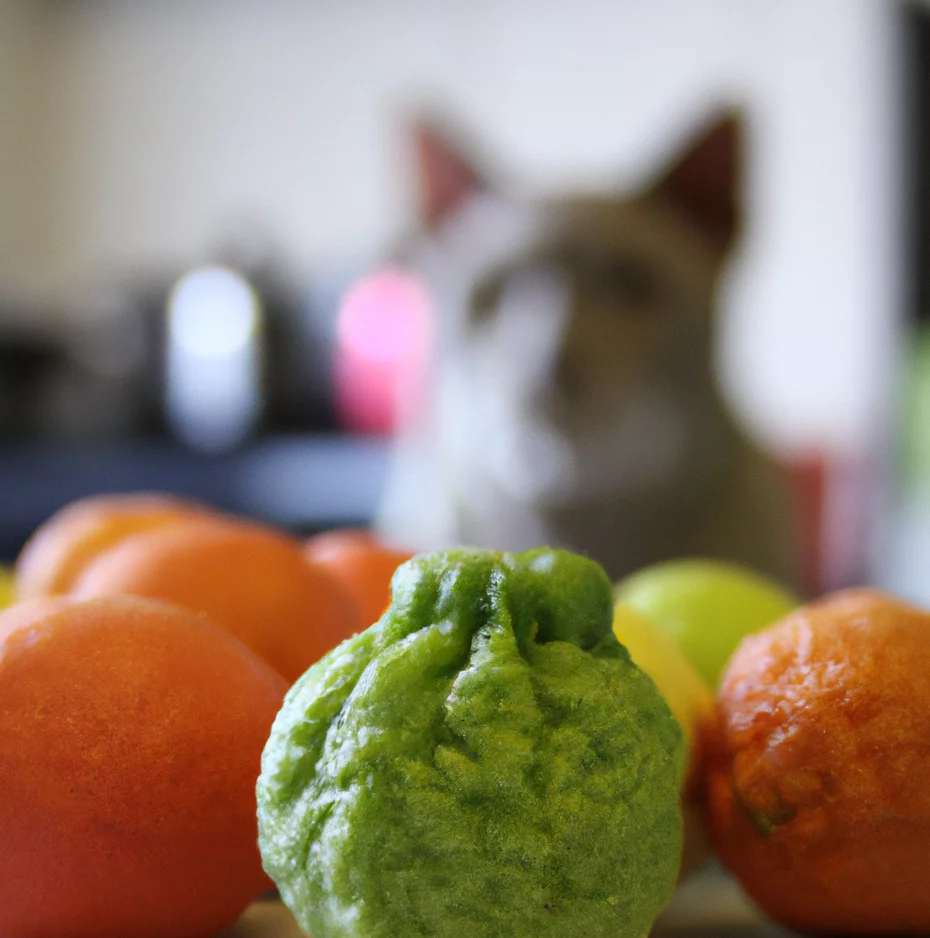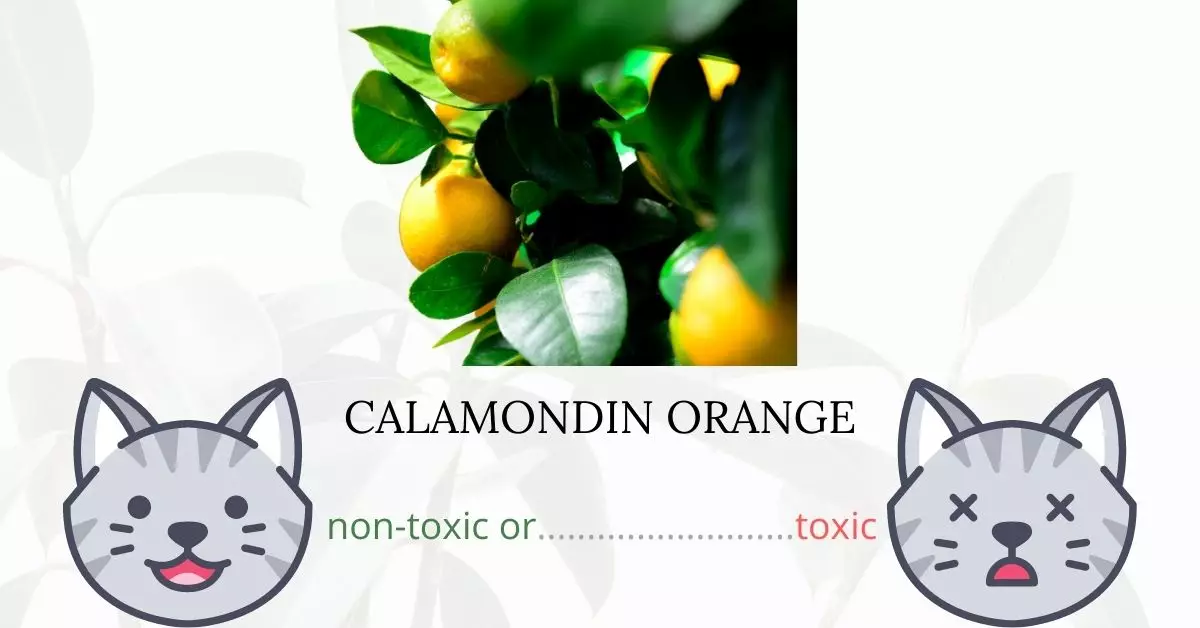Calamondin orange plants contain essential oils and psoralens which are indeed toxic to cats. When ingested by cats, psoralens can bind with DNA molecules and, in combination with sunlight exposure, lead to photosensitivity.
This article is a product of collaboration with a team of experienced DVMs (doctors of veterinary medicine). Their invaluable insights have ensured that our information on the potential risks associated with the Calamondin Orange and its effects on cats is both accurate and up-to-date. Furthermore, we have rigorously consulted high-authority websites such as the ASPCA and PetMD to validate our findings on every plant discussed herein.
Clinical Signs of Calamondin Orange Poisoning in Cats

The calamondin orange plant, including its leaves, flowers, and seeds, contains compounds that can adversely affect cats. When a cat comes into contact or ingests parts of the plant, it can lead to various symptoms:
- Vomiting: This is a common gastrointestinal response, as the cat’s body tries to expel the toxic compounds it has ingested from the calamondin orange plant.
- Diarrhea: Another gastrointestinal upset, diarrhea occurs as the cat’s system reacts to the toxins, attempting to purge them rapidly from the body.
- Light Sensitivity: Psoralens in the calamondin orange, once ingested, bind with the cat’s DNA molecules. When paired with exposure to sunlight, this bond can lead to heightened sensitivity to light, making cats more susceptible to phototoxic reactions.
- Inflammation of the Skin: The essential oils and psoralens in the plant can cause topical reactions, especially if the cat has brushed against or chewed on the plant. This irritation may manifest as redness, itching, or swelling.
- Depression: The ingestion or topical exposure to the plant’s toxic compounds can affect a cat’s central nervous system, leading to lethargy, reduced appetite, and a general state of depression.
It’s essential to monitor your cat closely if you suspect it has come into contact with or consumed calamondin orange, and seek veterinary advice promptly.
First Aid and Treatment of Calamondin Orange Poisoning in Cats

Fluid replacement therapy is needed in the treatment of calamondin orange poisoning. This aids in the replacement of fluids lost due to severe vomiting and diarrhea. It will also help in the removal of psoralen and essential oils from the cat’s system. In addition, this will also minimize photosensitivity instantly and should boost the cat’s energy levels. Itching and irritation of the cat’s skin can also be relieved quickly with medicated shampoo.
Recovery from Calamondin Orange Poisoning in Cats

Cats are rarely killed by calamondin orange poisoning. In most cases, the majority of cats recover completely within a few hours, with no long-term health consequences. Ensure to give your cat supportive care at home while he or she is recuperating.
Prevention of Calamondin Orange Poisoning in Cats
Keep your cat indoors to avoid getting into contact with the calamondin orange plant in other areas. Removing calamondin orange plants and other hazardous plants from your house and yard may be the best alternative.
If you love plants but have cats at home, check out these lists:





